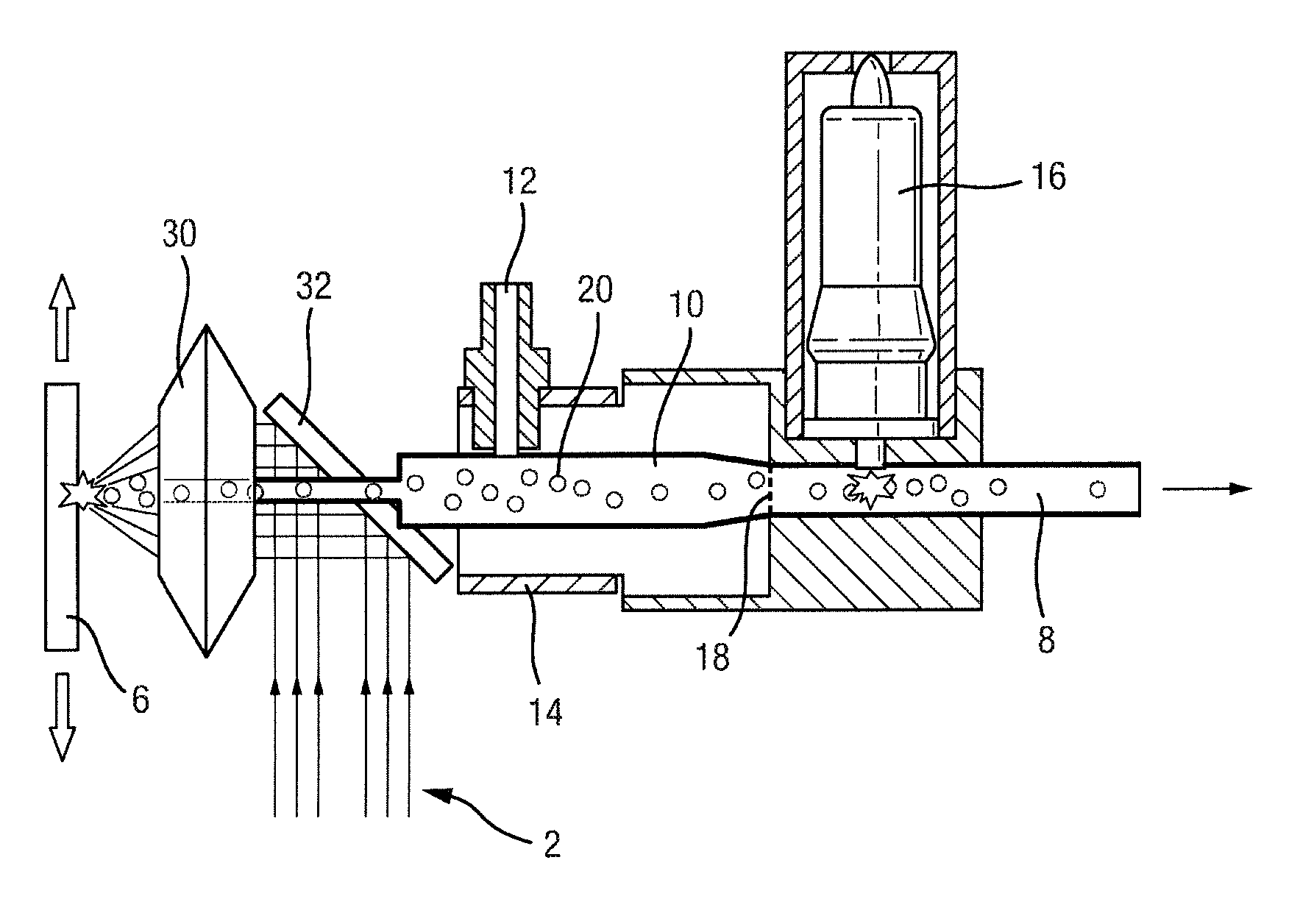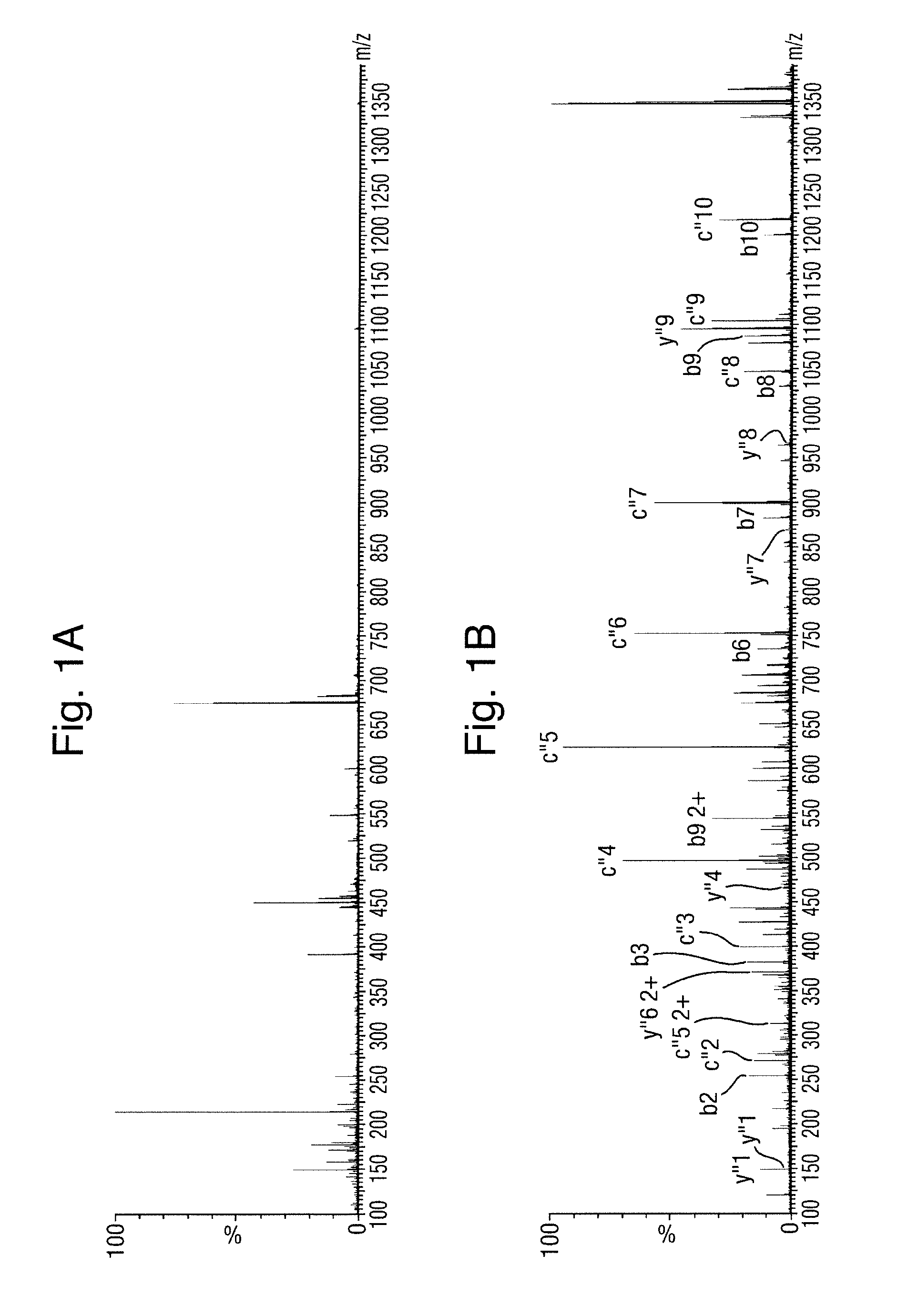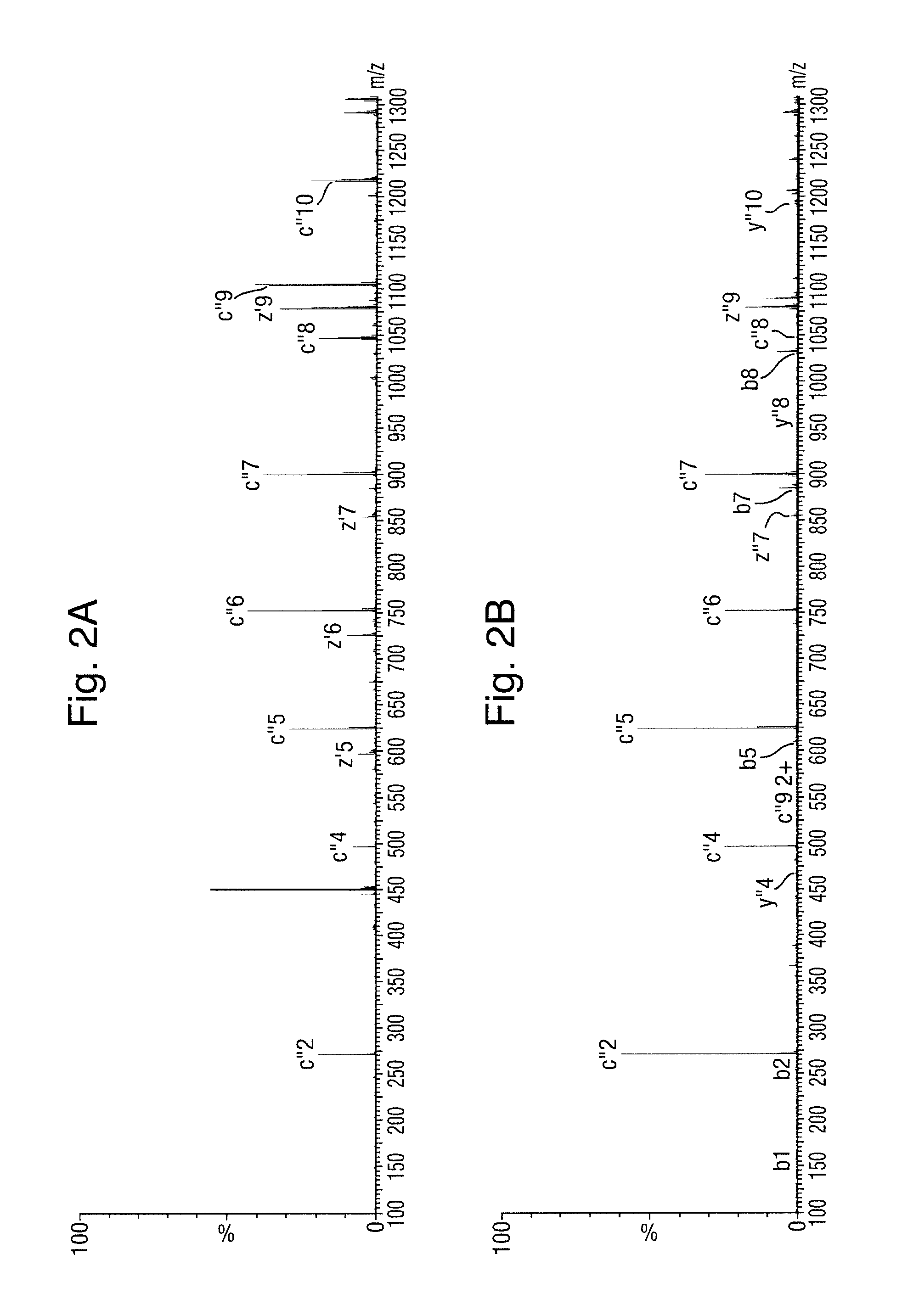MS/MS Analysis Using ECD or ETD Fragmentation
a technology of ecd or etd, applied in the field of mass spectrometry, can solve the problems of complex fragment ion spectra, difficult to assign precursor ions to their fragment ions from spectral data, and ap-ecd sources have no means of selecting precursor ions, etc., to achieve easy retrofitability, less cost, and significant more complex and expensive instruments
- Summary
- Abstract
- Description
- Claims
- Application Information
AI Technical Summary
Benefits of technology
Problems solved by technology
Method used
Image
Examples
Embodiment Construction
[0143]FIG. 1A shows a mass spectrum obtained by mass analysing a sample (substance-P) using a conventional technique so as to obtain MS data. FIG. 1B shows a mass spectrum obtained by subjecting the same sample to conventional AP-ECD and then mass analysing the resulting ions. The ECD conditions were provided by using a UV lamp to generate photo-electrons and allowing the photo-electrons to interact with the sample ions so as to achieve ECD.
[0144]As can be seen by comparing the two spectra of FIGS. 1A and 1B, the AP-ECD process causes parent ions shown in FIG. 1A to fragment into daughter ions shown in FIG. 1B. In this example, the sample being analysed is known (substance-P) and it is possible to identify some of the daughter ions peaks. However, the spectrum of FIG. 1B includes many other peaks of unknown origin and it is not possible to know directly from the experiment which peaks are due to parent ions or fragment ions. It will be appreciated that if the sample being analysed c...
PUM
 Login to view more
Login to view more Abstract
Description
Claims
Application Information
 Login to view more
Login to view more - R&D Engineer
- R&D Manager
- IP Professional
- Industry Leading Data Capabilities
- Powerful AI technology
- Patent DNA Extraction
Browse by: Latest US Patents, China's latest patents, Technical Efficacy Thesaurus, Application Domain, Technology Topic.
© 2024 PatSnap. All rights reserved.Legal|Privacy policy|Modern Slavery Act Transparency Statement|Sitemap



